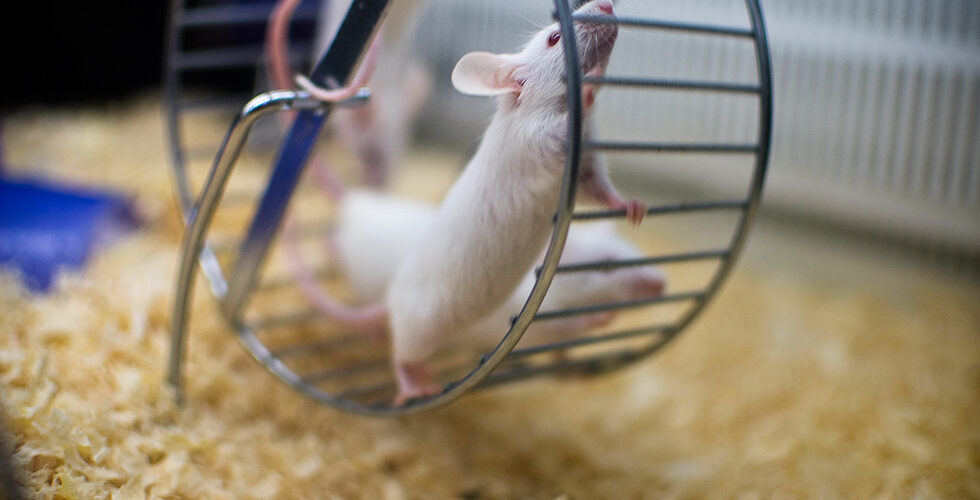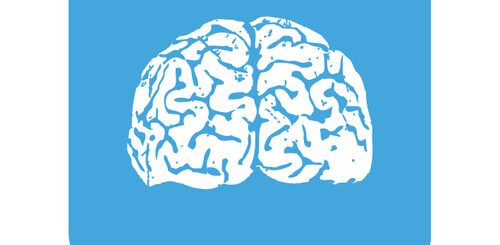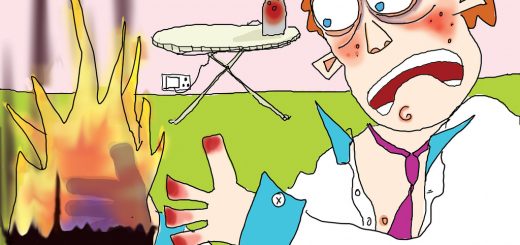You look like you need a nap, Grandma!

Do you often feel sleepy by 10 in the morning? Are you reading this right now and stifling a yawn, even though this is only the second sentence? Well, I’m afraid it’s only about to get worse. Research at the University of Glasgow has been investigating, using animal models, how our sleep changes as we age.
Did you know one of the most common complaints from the elderly is the changes in their sleep habits, and especially an inability to get enough sleep? They don’t even have the excuse of those 9AM deadlines! The field of developmental psychology has often put more emphasis on child development, but more and more research is now being done on what happens as we reach old age. In particular, at the department of Neuroscience and Psychology at the University of Glasgow, an on-going investigation is looking into how the circadian rhythm changes as we age using animal models. Animal research, despite being a controversial issue, has its advantages in this case. Firstly, mice brains are similar in many ways to human brains and so are somewhat comparable. Secondly, the environment of a mouse is much easier to control and manipulate (for science) than that of another animal, such as a chimpanzee. And thirdly, mice age much quicker, meaning that instead of waiting sixty years for a human subject to reach old age we only have to wait two years for mice to age.
Our body and its components are always ticking on some form of rhythm; the body’s own special beat, that is constantly keeping us alive. Our kidneys have clocks on them that tell us when we need to pee, and our stomach has a clock telling us when we’re hungry, etc. A very important one is the rhythm that informs us when we should feel sleepy and when we should feel awake. The brain’s “biological clock” is reportedly located in the suprachiasmatic nucleus (SCN). Glasgow researchers have observed the changes in the SCN in young, middle-aged, and old-aged mice in order to further our understanding of how the circadian rhythms change as we age. Mice are considered young from birth until nine months, middle-age from ten to eighteen months and old-aged at eighteen months onwards. The SCN (say it slowly – soop-rah-ky-az-ma-tic noo-klee-us) contains a circadian clock which receives signals from cells in the retina, which correspond to light and dark cycles.
One study observed that in ageing mice, the SCN clock does not respond to certain neurochemicals as it usually does 1. These neurochemicals normally control whether the SCN makes us sleepy or wakeful. In particular, inhibition is observed with the neurotransmistters glutamate, N-methyl-D-aspartate (NMDA), gastrin-releasing peptide (GRP) and histamine (HA). This led to the conclusion that the SCN is associated with changes in the circadian rhythm that are part of the ageing process. However, there is hope! Not all of the neurochemicals were affected by ageing, and so it may be possible to reverse the changes that occur and lessen the impact of ageing. But, as in all studies that are interesting, there are surprises too. These changes in inhibited response to specific neurotransmitters begins to occur when the mice hit middle-age and response becomes more inhibited as the mice grew into old age – which is earlier than when we previously thought these changes occurred.
You might plan to travel when you’re older, after graduation, when you are richer and wiser. Well, research at the Glasgow lab has also been investigating how our circadian rhythm recovery changes as we age 2. Though rather than packing the mice off on a lovely summer holiday, they simply shifted the light-dark cycle forward eight hours (equivalent of an oriental trip to China). Young (0-9 months) and old (18-24 months) mice were placed in cages, either with an exercise wheel or without. The wheels in the cages provided the mouse with an opportunity to exercise, and as it turns out, this had an effect on the natural ageing process. The SCN (suprachiasmatic nucleus, you got it now!) was more active in mice with exercise wheels than mice without wheels. The older mice without wheels took longer to adjust to the change in light-dark cycle than younger mice, but this effect was levelled when the older mice had wheels. So an old mouse, with a wheel, adjusted just as quickly to the time change as a young mouse without a wheel. This research suggests that as we age, our ability to adjust to changes in our circadian rhythm cycle (whether seasonal or changes in time zone) is weakened. It also suggests that exercise might allow the changes to happen more slowly.
Hope you’re still awake, and not itching for that coffee to stop the eyelids from dropping. Just remember that – as the natural ageing process causes our sleep quality and ability to recover from time zone shifts to worsen – you might need a lot more stay-awake life hacks when you’re older.
References
- Biello, SM. Circadian clock resetting in the mouse changes with age. Age 2009;31(4): 293- 329. doi: 10.1007/s11357-009-9102-7 (accessed on 09 March 2014).
- Leise TL, Harrington ME, Molyneux PC, Queenan H, Zimmerman E, Lall, GS and Biello SM. Voluntary exercise can strengthen the circadian system in aged mice. Age 2013;35(1): 2137- 2152. doi: 10.1007/s11357-012-9512-y (accessed on 09 March 2014).










